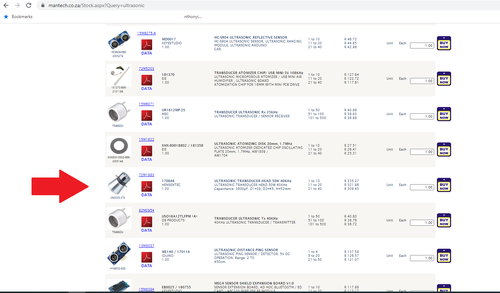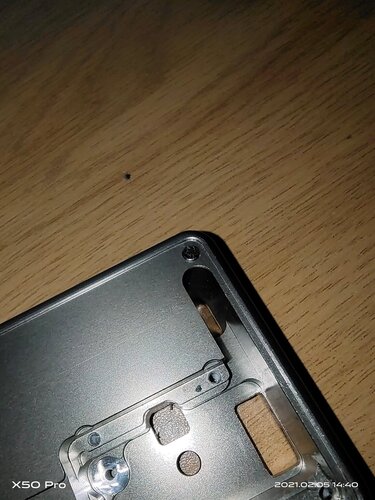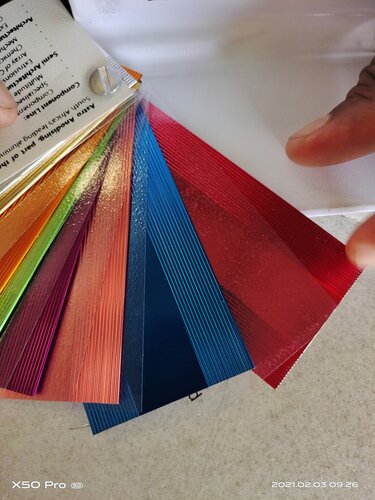Nevermind. He is dead.
Navigation
Install the app
How to install the app on iOS
Follow along with the video below to see how to install our site as a web app on your home screen.

Note: this_feature_currently_requires_accessing_site_using_safari
More options
You are using an out of date browser. It may not display this or other websites correctly.
You should upgrade or use an alternative browser.
You should upgrade or use an alternative browser.
Weekend Projects
- Thread starter Resistance
- Start date
-
- Tags
- weekend
duralumin?
Isnt that the sh1t Tony Stark is looking for?
LOL ... Naah
Has anyone on the forum played around / had any experience with ultrasonic transducers? (outside of the common usage in high frequency baths that is), as I'd like to explore some possibilities.
It seems they make excellent atomisers, (they may well be alternatives to what we currently use as attys?), and they're fantastic for mixing liquids, (even offering true homogenizing, even molecular disintegration at certain frequencies!), along with degassing of fluids, (which should perk up some interest with anyone mixing up eliquid).
Mantech have a few reasonably priced high power transducers, and knocking up a high power oscillator is easy enough
It seems they make excellent atomisers, (they may well be alternatives to what we currently use as attys?), and they're fantastic for mixing liquids, (even offering true homogenizing, even molecular disintegration at certain frequencies!), along with degassing of fluids, (which should perk up some interest with anyone mixing up eliquid).
Mantech have a few reasonably priced high power transducers, and knocking up a high power oscillator is easy enough
Last edited:
Haven't yet. SorryHas anyone on the forum played around / had any experience with ultrasonic transducers? (outside of the common usage in high frequency baths that is), as I'd like to explore some possibilities.
It seems they make excellent atomisers, (they may well be alternatives to what we currently use as attys?), and they're fantastic for mixing liquids, (even offering true homogenizing, even molecular disintegration at certain frequencies!), along with degassing of fluids, (which should perk up some interest with anyone mixing up eliquid).
Mantech have a few reasonably priced high power transducers, and knocking up a high power oscillator is easy enough
https://www.electrical4u.com/transducer-types-of-transducer/
Has anyone on the forum played around / had any experience with ultrasonic transducers? (outside of the common usage in high frequency baths that is), as I'd like to explore some possibilities.
It seems they make excellent atomisers, (they may well be alternatives to what we currently use as attys?), and they're fantastic for mixing liquids, (even offering true homogenizing, even molecular disintegration at certain frequencies!), along with degassing of fluids, (which should perk up some interest with anyone mixing up eliquid).
Mantech have a few reasonably priced high power transducers, and knocking up a high power oscillator is easy enough
Yes that version goes on the ultrasonic mixers.Then it's an opportunity for us to learn... the one below is reasonable enough to test with ... and it's 50W to boot!
View attachment 220954
View attachment 220955
Didn't know you get the complete end unit as a spare part.
The Usonocig already used it as a vaporisers. You might want to check their site. It was a pod system.
Yes that version goes on the ultrasonic mixers.
Didn't know you get the complete end unit as a spare part.
It seems so
Thanks ... Lemme go check it outThe Usonocig already used it as a vaporisers. You might want to check their site. It was a pod system.
EDIT: Check this out
Last edited:
Also check out the second item on the pic you posted. Ultrasonic Attomiser. It's worth a look into don't you think. I'm intrigued now!Then it's an opportunity for us to learn... the one below is reasonable enough to test with ... and it's 50W to boot!
View attachment 220954
View attachment 220955
Soooo ... some feedback on my earlier 40KHz 50W transducer test;
I purchased one this morning from Mantech, and set up a quick test with a signal generator into an old NAD Mosfet amp, (claimed to work from DC to 100KHz into 2ohm loads).
I machined a tapered tip of 75mm, (thumbsuck measurement , as there was no way I was going to have a full wavelength tip of 7494.81metres, for 40KHz ), screwed it into the transducer, connected it all and powered up ....
), screwed it into the transducer, connected it all and powered up ....
Sooooo moving on swiftly from that disastrous failure of a test that barely vibrated my 50:50 mix of PG and VG ... I contacted a company in Germany called Hielscher Ultrasonics, who make commercial sonicator units, (that's what they call their homogenisers), and it seems that considerably more than 50Watts is required, (at a much higher frequency) to "sonicate" a beaker of eliquid. An extract of their mail to me follows;
Thank you for your feedback. The ultrasound works differently from a conventional homogenizer. The basic principle of the ultrasound is that, under a particular frequency and amplitude, sound waves produce vacuum bubbles (cavitation) in liquids. These bubbles grow to a critical size and then collapse. This results in a high release of energy in the liquid medium, which can be used for mixing, extracting, etc. In our experience your frequency and power is too low for glycerin, even at a 50 percent dilution.
As a first proposal, I would suggest our UP400St, which is our most powerful lab unit, suitable for the sonication of most materials at laboratory and pre-industrial scales. Its price is around 6000 €.
As discussed, in Johannesburg we have a local partner, who works on plant extraction. I think they also use our devices for extraction in glycerine. If you are interested in our devices, they can probably arrange a demonstration and import a device for you. I cc'd Dr. Ferguson to this e-mail. Here their contact details and a link to their company at our website:
https://www.hielscher.com/w-last-high-quality-extracts-with-sonication.htm
I'll certainly attend the proposed test / demonstration for curiosity sake, however I'm still reeling under the effects of the erm ... 6000 € price tag , and think I'll be shelving this as a DIY project until I know a LOT more about it.
, and think I'll be shelving this as a DIY project until I know a LOT more about it.
I purchased one this morning from Mantech, and set up a quick test with a signal generator into an old NAD Mosfet amp, (claimed to work from DC to 100KHz into 2ohm loads).
I machined a tapered tip of 75mm, (thumbsuck measurement , as there was no way I was going to have a full wavelength tip of 7494.81metres, for 40KHz
Sooooo moving on swiftly from that disastrous failure of a test that barely vibrated my 50:50 mix of PG and VG ... I contacted a company in Germany called Hielscher Ultrasonics, who make commercial sonicator units, (that's what they call their homogenisers), and it seems that considerably more than 50Watts is required, (at a much higher frequency) to "sonicate" a beaker of eliquid. An extract of their mail to me follows;
Thank you for your feedback. The ultrasound works differently from a conventional homogenizer. The basic principle of the ultrasound is that, under a particular frequency and amplitude, sound waves produce vacuum bubbles (cavitation) in liquids. These bubbles grow to a critical size and then collapse. This results in a high release of energy in the liquid medium, which can be used for mixing, extracting, etc. In our experience your frequency and power is too low for glycerin, even at a 50 percent dilution.
As a first proposal, I would suggest our UP400St, which is our most powerful lab unit, suitable for the sonication of most materials at laboratory and pre-industrial scales. Its price is around 6000 €.
As discussed, in Johannesburg we have a local partner, who works on plant extraction. I think they also use our devices for extraction in glycerine. If you are interested in our devices, they can probably arrange a demonstration and import a device for you. I cc'd Dr. Ferguson to this e-mail. Here their contact details and a link to their company at our website:
https://www.hielscher.com/w-last-high-quality-extracts-with-sonication.htm
I'll certainly attend the proposed test / demonstration for curiosity sake, however I'm still reeling under the effects of the erm ... 6000 € price tag
C'mon, what happened to the old saying ... "in for a penny, in for a pound"Soooo ... some feedback on my earlier 40KHz 50W transducer test;
I purchased one this morning from Mantech, and set up a quick test with a signal generator into an old NAD Mosfet amp, (claimed to work from DC to 100KHz into 2ohm loads).
I machined a tapered tip of 75mm, (thumbsuck measurement , as there was no way I was going to have a full wavelength tip of 7494.81metres, for 40KHz), screwed it into the transducer, connected it all and powered up ....
Sooooo moving on swiftly from that disastrous failure of a test that barely vibrated my 50:50 mix of PG and VG ... I contacted a company in Germany called Hielscher Ultrasonics, who make commercial sonicator units, (that's what they call their homogenisers), and it seems that considerably more than 50Watts is required, (at a much higher frequency) to "sonicate" a beaker of eliquid. An extract of their mail to me follows;
Thank you for your feedback. The ultrasound works differently from a conventional homogenizer. The basic principle of the ultrasound is that, under a particular frequency and amplitude, sound waves produce vacuum bubbles (cavitation) in liquids. These bubbles grow to a critical size and then collapse. This results in a high release of energy in the liquid medium, which can be used for mixing, extracting, etc. In our experience your frequency and power is too low for glycerin, even at a 50 percent dilution.
As a first proposal, I would suggest our UP400St, which is our most powerful lab unit, suitable for the sonication of most materials at laboratory and pre-industrial scales. Its price is around 6000 €.
As discussed, in Johannesburg we have a local partner, who works on plant extraction. I think they also use our devices for extraction in glycerine. If you are interested in our devices, they can probably arrange a demonstration and import a device for you. I cc'd Dr. Ferguson to this e-mail. Here their contact details and a link to their company at our website:
https://www.hielscher.com/w-last-high-quality-extracts-with-sonication.htm
I'll certainly attend the proposed test / demonstration for curiosity sake, however I'm still reeling under the effects of the erm ... 6000 € price tag, and think I'll be shelving this as a DIY project until I know a LOT more about it.
Soooooo ... I calculated the length of rod for the transducer at like 7Km or thereaboutsC'mon, what happened to the old saying ... "in for a penny, in for a pound"

So by placing one scope probe across a shunt resistor, and another across the transducer, one gets two scope traces, one of voltage, and one of current, and it's a fairly simple? exercise of adjusting the frequency until the current sine wave is at it's highest, which should at that point also be in phase with the voltage sine wave ... which kinda happened ... (give or take about 10 degrees
I was pushing some 20Watts into the transducer at this point, so ... I continued increasing the voltage, expecting something ... anything? to start happening, (at this point I should add that the amplifier was in bridge mode, meaning a potential 400Watt output with soft clipping ... more commonly known as DC at clipping!).
So somewhere between the initial 20 and some 400Watts? into a device that was only good for some 50 ... things got just a tad warm, and started emulating Red Indian territory ... with a few smoke signals, (thankfully from the cabling), albeit that the transducer was a tad warm ... but that's not where it ends ...
Those that have cooked inductors or transformers know that the external temperature goes up further even after disconnecting the supply, due to the (MUCH HOTTER) core temperature requiring time to radiate outwards, and it's about that time that I picked up the transducer, and surprised my Domestic Executive with my command of, (four letter military), vocabulary ...
{now thats already waaaaaaay too much incriminating information, so I'll now apply what the Americans refer to as the 5th amendment, and in SA, what we call "the Zuma", and shut up!}
Soooooo ... I calculated the length of rod for the transducer at like 7Km or thereabouts, so even a quarter wavelength would have meant almost a kilometer long "probe", so I canned that and did a thumb suck of 75mm and decided to adjust the signal generators frequency as apposed to adjusting the length of "probe", and ... for those that don't know how the "old fashioned method" of finding the resonant frequency of a coil works ... an inductor, (or coil), draws maximum current at resonant frequency, (as the current and voltage waveforms move from 90 degrees out of phase to perfectly in phase).
So by placing one scope probe across a shunt resistor, and another across the transducer, one gets two scope traces, one of voltage, and one of current, and it's a fairly simple? exercise of adjusting the frequency until the current sine wave is at it's highest, which should at that point also be in phase with the voltage sine wave ... which kinda happened ... (give or take about 10 degrees), and I carried on ... with zero happening in the beaker.
I was pushing some 20Watts into the transducer at this point, so ... I continued increasing the voltage, expecting something ... anything? to start happening, (at this point I should add that the amplifier was in bridge mode, meaning a potential 400Watt output with soft clipping ... more commonly known as DC at clipping!).
So somewhere between the initial 20 and some 400Watts? into a device that was only good for some 50 ... things got just a tad warm, and started emulating Red Indian territory ... with a few smoke signals, (thankfully from the cabling), albeit that the transducer was a tad warm ... but that's not where it ends ...
Those that have cooked inductors or transformers know that the external temperature goes up further even after disconnecting the supply, due to the (MUCH HOTTER) core temperature requiring time to radiate outwards, and it's about that time that I picked up the transducer, and surprised my Domestic Executive with my command of, (four letter military), vocabulary ...
{now thats already waaaaaaay too much incriminating information, so I'll now apply what the Americans refer to as the 5th amendment, and in SA, what we call "the Zuma", and shut up!}
Ok so that didn't work. Why not try a piezo wrapped in plastic, into the 50/50plain mix and then just send frequency waves to it.
By the way.. 50 points for trying and another 50 for doing. Awesome.Soooooo ... I calculated the length of rod for the transducer at like 7Km or thereabouts, so even a quarter wavelength would have meant almost a kilometer long "probe", so I canned that and did a thumb suck of 75mm and decided to adjust the signal generators frequency as apposed to adjusting the length of "probe", and ... for those that don't know how the "old fashioned method" of finding the resonant frequency of a coil works ... an inductor, (or coil), draws maximum current at resonant frequency, (as the current and voltage waveforms move from 90 degrees out of phase to perfectly in phase).
So by placing one scope probe across a shunt resistor, and another across the transducer, one gets two scope traces, one of voltage, and one of current, and it's a fairly simple? exercise of adjusting the frequency until the current sine wave is at it's highest, which should at that point also be in phase with the voltage sine wave ... which kinda happened ... (give or take about 10 degrees), and I carried on ... with zero happening in the beaker.
I was pushing some 20Watts into the transducer at this point, so ... I continued increasing the voltage, expecting something ... anything? to start happening, (at this point I should add that the amplifier was in bridge mode, meaning a potential 400Watt output with soft clipping ... more commonly known as DC at clipping!).
So somewhere between the initial 20 and some 400Watts? into a device that was only good for some 50 ... things got just a tad warm, and started emulating Red Indian territory ... with a few smoke signals, (thankfully from the cabling), albeit that the transducer was a tad warm ... but that's not where it ends ...
Those that have cooked inductors or transformers know that the external temperature goes up further even after disconnecting the supply, due to the (MUCH HOTTER) core temperature requiring time to radiate outwards, and it's about that time that I picked up the transducer, and surprised my Domestic Executive with my command of, (four letter military), vocabulary ...
{now thats already waaaaaaay too much incriminating information, so I'll now apply what the Americans refer to as the 5th amendment, and in SA, what we call "the Zuma", and shut up!}
Ok so that didn't work. Why not try a piezo wrapped in plastic, into the 50/50plain mix and then just send frequency waves to it.
That's certainly a possibility
Check out; https://circuitglobe.com/piezo-electric-transducer.html for some fairly easy to understand info on quartz crystal transducers
That's certainly a possibility... I want to dismember a 500Watt Piezo tweeter, and see if I can somehow attach a probe of sorts to where the cone normally mounts. First prize is to keep the piezo crystal itself far away from anything that can alter it's resonant frequency, (including any protective coating), also, that it's chemical makeup includes some "man made elements" other than quartz, that might be altered by immersing it in eliquid, and the idea of growing another schwantz from my armpit does little to inspire taking secondary chemical risks.
Check out; https://circuitglobe.com/piezo-electric-transducer.html for some fairly easy to understand info on quartz crystal transducers
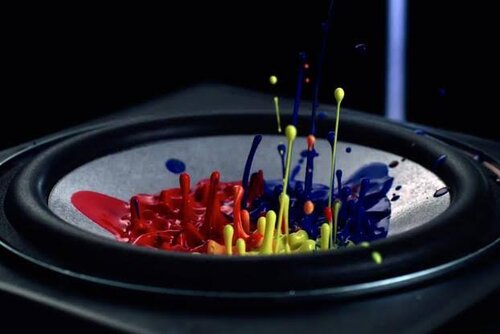
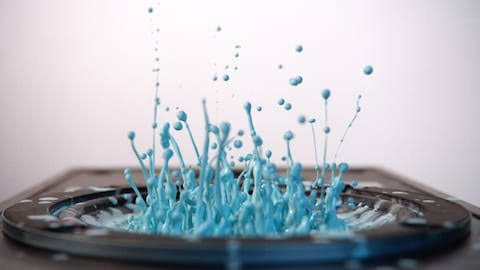
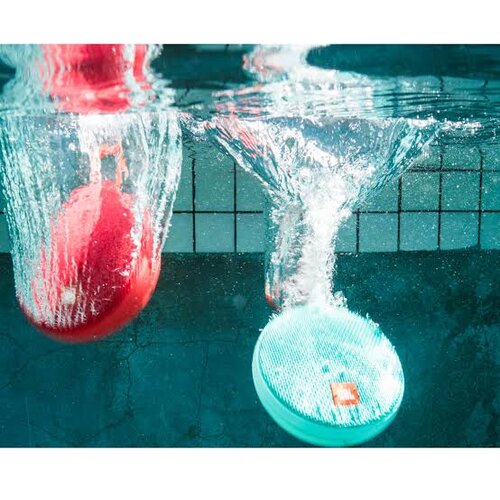
So here is a project I am busy with for my BB. I took the leap and stripped the thing down. My plan is to get it anodized in a deep blue and get the button plate done in a silver color. I took a drive out to Astro Anodizing in Sebenza today but they could not help me as the magnets that are attached to the frame are still in place. Good news is they have the color scheme I want and can do it for relatively cheap once the magnets have been removed. Now the mission begins by trying to get these things out. I have tried soaking them in Acetone thinking they are glued down, I have heated it up with a hairdryer and the tip of the soldering iron but still they will not budge.
I'm not to concerned about damaging them as they are relatively cheap to replace. Has anyone perhaps done something similar? My next step is to try drill them out.
I'm not to concerned about damaging them as they are relatively cheap to replace. Has anyone perhaps done something similar? My next step is to try drill them out.
Attachments
So here is a project I am busy with for my BB. I took the leap and stripped the thing down. My plan is to get it anodized in a deep blue and get the button plate done in a silver color. I took a drive out to Astro Anodizing in Sebenza today but they could not help me as the magnets that are attached to the frame are still in place. Good news is they have the color scheme I want and can do it for relatively cheap once the magnets have been removed. Now the mission begins by trying to get these things out. I have tried soaking them in Acetone thinking they are glued down, I have heated it up with a hairdryer and the tip of the soldering iron but still they will not budge.
I'm not to concerned about damaging them as they are relatively cheap to replace. Has anyone perhaps done something similar? My next step is to try drill them out.
Sounds like a great project
Are you using Astra in Sebenza? ... If so, they're fantastic ... I've used them before to anodize some bike parts
As to your magnet removal ... Good luck with drilling them ... they're as tough as nails, and you have more chance of drillind a piece of tool steel than one of them ... (assuming they're rare earth magnets that is? ... the most common being a sintering of neodymium, iron, and boron).
Your best bet would be to somehow apply heat directly to/on the magnet, with the intention of breaking down the glue / epoxy holding it / them in place. The heat will also destroy them as magnets, and you'll be left with a piece of demagnetised sintered metal.
You can get new ones from Sabel Magnetics in Orange Grove
Would a springloaded centre punch not crack/break it?Sounds like a great project
Are you using Astra in Sebenza? ... If so, they're fantastic ... I've used them before to anodize some bike parts
As to your magnet removal ... Good luck with drilling them ... they're as tough as nails, and you have more chance of drillind a piece of tool steel than one of them ... (assuming they're rare earth magnets that is? ... the most common being a sintering of neodymium, iron, and boron).
Your best bet would be to somehow apply heat directly to/on the magnet, with the intention of breaking down the glue / epoxy holding it / them in place. The heat will also destroy them as magnets, and you'll be left with a piece of demagnetised sintered metal.
You can get new ones from Sabel Magnetics in Orange Grove
Good thinking! ... that may well do the trickWould a springloaded centre punch not crack/break it?
I'm worried about damaging the casing. It is aluminium. I'm going to give it an acetone bath tonight and if that does not work I'll give the drill a bash. I'm not to worried about damaging them as they are chap as nails.Would a springloaded centre punch not crack/break it?
I'm worried about damaging the casing. It is aluminium. I'm going to give it an acetone bath tonight and if that does not work I'll give the drill a bash. I'm not to worried about damaging them as they are chap as nails.
You're wasting your time with a drill, however the center punch may well crack the glue / epoxy, and I'd say it's worth a try, as would the soaking in acetone or other solvents ... btw ...the hammer requires lots of gentle taps as apposed a single blow with a 100 ton hydraulic hammer, the intention being to crack the glue/epoxy bonding
One of these or similar should provide enough force to crack the magnet without hurting the case:
Similar threads
- Replies
- 0
- Views
- 188
- Replies
- 6
- Views
- 1K
- Replies
- 1
- Views
- 81


